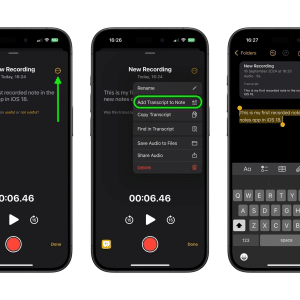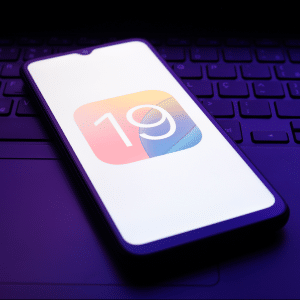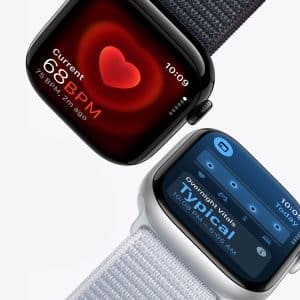Feb. 06–Beulah Parisi got her first computer at 100 years old.
Her neighbor Louise Evans, 103, has a computer, two iPod music players, a Kindle Fire, an iPad and the newest iPhone.
At their Milwaukie retirement community Willamette View, the percentage of new residents with some sort of connected device has risen from about a third to “nearly everyone,” says Willamette View spokeswoman Joyce Allmon.
One needs only look inside a retirement community, senior community center or public library computing class to notice the increasing presence of seniors in digital pursuits.
The numbers are significant. Last year marked the first time more than half of adults over 65 were connected to the Internet.
Meanwhile, people 65-and-up were the fastest-growing group of Facebook users, with their presence on the site nearly tripling from 13 percent in 2009 to 34 percent last year.
And 70 percent of seniors in the same age group own a cellphone, up 13 percentage points since 2010.
“Clinging to the theory that I don’t need access to the Internet is diminishing among seniors,” says Laurie Orlov, an industry analyst who runs Aging in Place Technology Watch. “Pretty soon, there’s not going to be a lot you’ll be able to do without access to the Internet.”
Grandma and Grandpa are getting wired, and it’s changing the way we think and talk about the digital future.
Digital changes On a recent morning at the Lake Oswego Adult Community Center, a half-dozen students ages 61 and up listen as 77-year-old former IBM employee Mark Matson explains the iPad’s tricks and tools. Community center officials organized the impromptu class after their first iPad course garnered unprecedented attention, filling beyond capacity.
Listening intently to Matson’s instructions on editing photographs, creating calendar reminders and personalizing their settings, the students seek to master a device they’re told will help them stay connected with faraway family members and keep track of finances, prescriptions and library holds.
The younger students have had computers before, but want to move past simple word processing and digital photography. Ken Hornung, on the other hand, has never owned a computer. This is the 72-year-old’s first wired device — something he bought at the pleading of his family members.
“My kids convinced me if I want to stay up to date with the grandchildren, I better get one,” he says. “That’s a no-brainer.”
Then there are the “young” seniors, those entering their sunset years with significant computing experience from the workplace. They’re already wired, and want late-life care that reflects that evolution. They’re showing up at senior living communities with at least one computer, plus e-readers, cellphones and tablets.
Business evolves Sarah Hoit has built a nationwide business outfitting elder care centers to address the technology needs of the new wave of seniors. She says most centers, with limited wireless connectivity and floor plans that don’t consider the need for broadband outlets and work desks, are “like a black hole in a tech world.”
“We’ve completely and utterly disconnected an entire generation,” she says, but that’s changing as aging boomers choose to spend their money at connected communities.
Because boomers are so numerous — 76 million, by many estimates — businesses see opportunity in their late-life technological needs. They’ll want computers with hearing and visual amplification, specialized mouse devices for arthritic hands, and other features. They’ll want technology to adapt to their changing needs, rather than forcing them to adapt or be left out of the discussion.
“There isn’t a single boomer moving into any building who is not completely wired,” Hoit says. “It’s changing the business.”
And because aging boomers will more than double America’s 65-and-over population to 89 million by 2050, the nation will have a mass uptick in people needing assistive technology. Tech companies are responding by investing in development.
HP has developed a “senior computer,” and Intel has partnered with Oregon Health & Science University to create the Oregon Center for Aging and Technology, where researcher Hiroko Dodge studies the benefits of video chatting among the elderly.
If seniors can overcome the initial intimidation of learning a new technology, she says, they stand to gain a lot.
Preliminary results in Dodge’s study suggest online interactions could significantly slow age-related cognitive decline.
“One of the big benefits of technology is freedom, she says. “They can stay home with a mobility issue, yet they can connect with society.”
From intimidation to empowerment There are personal benefits, as well, says Louise Evans.
At 103, she is a true technology convert. She got her first computer in her late 70s, and still keeps up with the latest gadget releases. She entertains friends at the lunch table by looking up Wikipedia factoids on her iPhone 5.
New technology has made seniors’ digital conversion easier, says Elisha Kirsch, a specialist for Salem-based Access Technologies, which connects seniors and disabled people with technology. The portable, touch-based, vibrantly colored tablet computers are easier to navigate for those without a lifetime of past experience.
Kirsch tours the state with Access Technologies’ lending library, providing seniors with low-cost rentals of everything from e-readers to specially equipped computers.
“I have a 90-year-old woman who came in for a magnifier for using the newspaper,” Kirsch says. “I pulled (a Kindle) out and she fell in love with the DX version. She was like, ‘Oh my goodness, I can see the print as large as I need it.'”
True, there was a learning curve, but classes like the Lake Oswego one are becoming more common, and are often free.
And they’re filling up faster than ever.
When he first fiddled with his new iPad, Ken Hornung could do little more than turn it on. Now, he uses it to share photos, browse online and conduct video chats with his grandkids on a regular basis.
“The more you use it, the more you find out,” he says. “My wife and I took a trip to Europe for our anniversary. The cruise ship had Wi-Fi, and we were able to FaceTime our kids from the Rhine River. That was just unbelievable.”
The Oregonian
(c)2013 The Oregonian (Portland, Ore.)












